id gender age hypertension heart_disease ever_married \
0 9046 Male 67.0 0 1 Yes
1 51676 Female 61.0 0 0 Yes
2 31112 Male 80.0 0 1 Yes
3 60182 Female 49.0 0 0 Yes
4 1665 Female 79.0 1 0 Yes
work_type Residence_type avg_glucose_level bmi smoking_status \
0 Private Urban 228.69 36.6 formerly smoked
1 Self-employed Rural 202.21 NaN never smoked
2 Private Rural 105.92 32.5 never smoked
3 Private Urban 171.23 34.4 smokes
4 Self-employed Rural 174.12 24.0 never smoked
stroke
0 1
1 1
2 1
3 1
4 1 Stroke Prediction Based on Demographics and Medical History
INFO 511 - Fall 2024 - Final Project
Introduction
Strokes can be a deadly medical condition, and even if the patient survives there can be life long consequences as a result of the stroke.
This is why we wanted to look into a dataset that may allow us to help predict the risk factors that cause a stroke.
Dataset
- The dataset used is from a study published in China in 2020.
- It represents a case group of individuals who had a stroke, and a control group of those who did not.
Data
- Observations include age, gender, marital status, and employment status, as well as medical information such as BMI, glucose levels, smoking history, etc.
Data
- Qualitative variables: gender, smoking status, employment status, marital status.
- Quantitative variables: age, BMI, glucose index.
<class 'pandas.core.frame.DataFrame'>
RangeIndex: 5110 entries, 0 to 5109
Data columns (total 12 columns):
# Column Non-Null Count Dtype
--- ------ -------------- -----
0 id 5110 non-null int64
1 gender 5110 non-null object
2 age 5110 non-null float64
3 hypertension 5110 non-null int64
4 heart_disease 5110 non-null int64
5 ever_married 5110 non-null object
6 work_type 5110 non-null object
7 Residence_type 5110 non-null object
8 avg_glucose_level 5110 non-null float64
9 bmi 4909 non-null float64
10 smoking_status 5110 non-null object
11 stroke 5110 non-null int64
dtypes: float64(3), int64(4), object(5)
memory usage: 479.2+ KB
NoneVisualization for Stroke Distribution
- Across the population, there is a higher proportion of people who do not suffer from stroke as compared to those who do suffer from stroke.
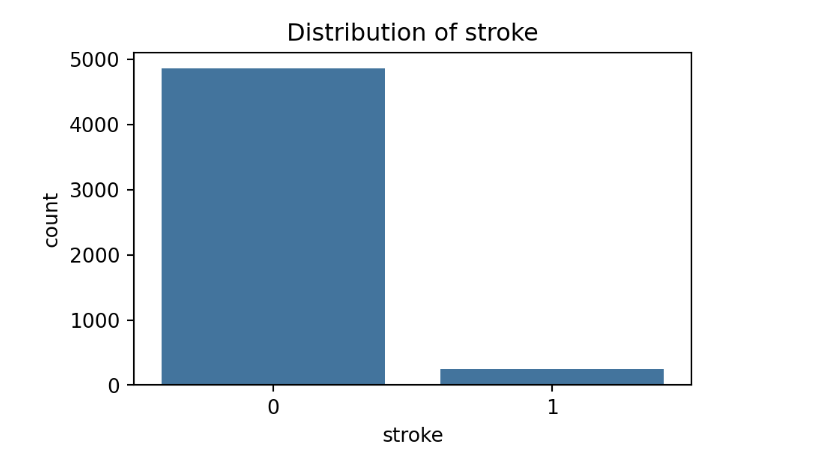
Visualization for Gender Distribution
- As for gender analysis, there is a higher proportion of females as compared to males surveyed.
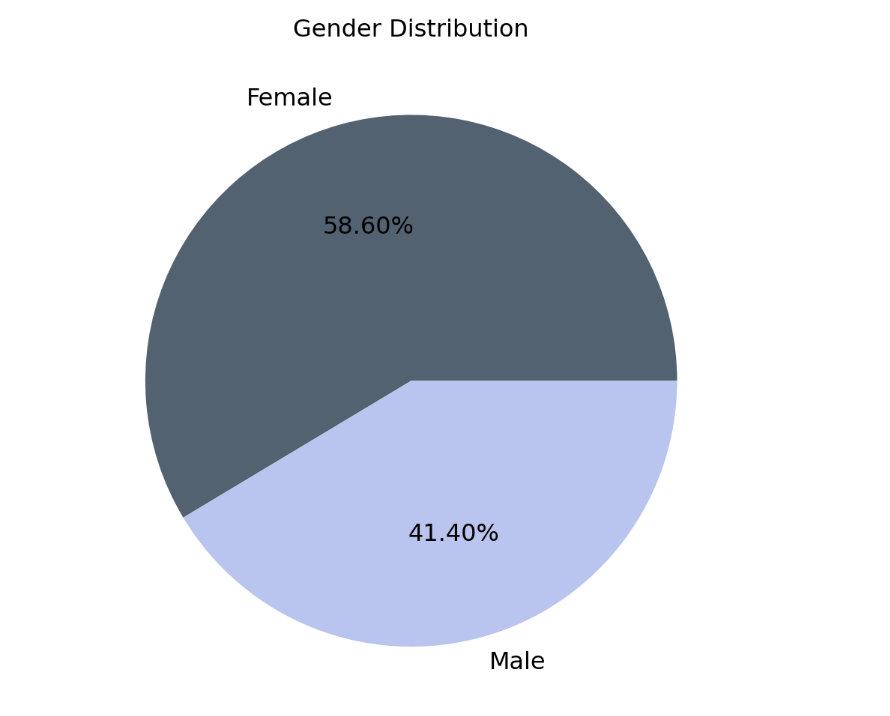
Visualization for Residence Type Distribution
- In terms of residence type, the distribution for rural vs urban are highly equivalent.
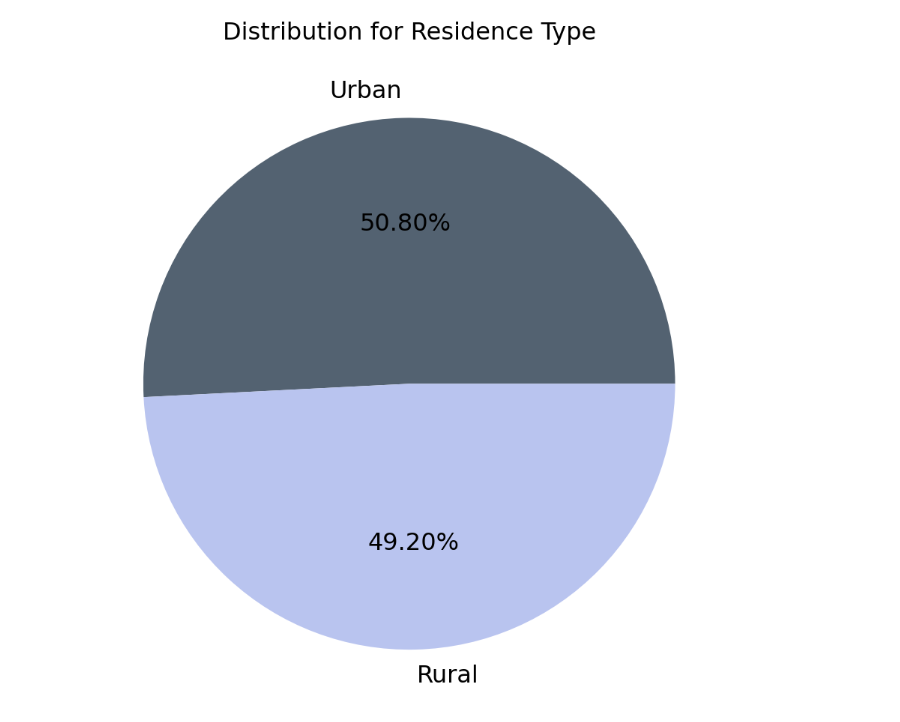
Visualization for Marital Status Distribution
- As for marital status, there is a higher proportion of people surveyed who are married, as compared to those who are not married.
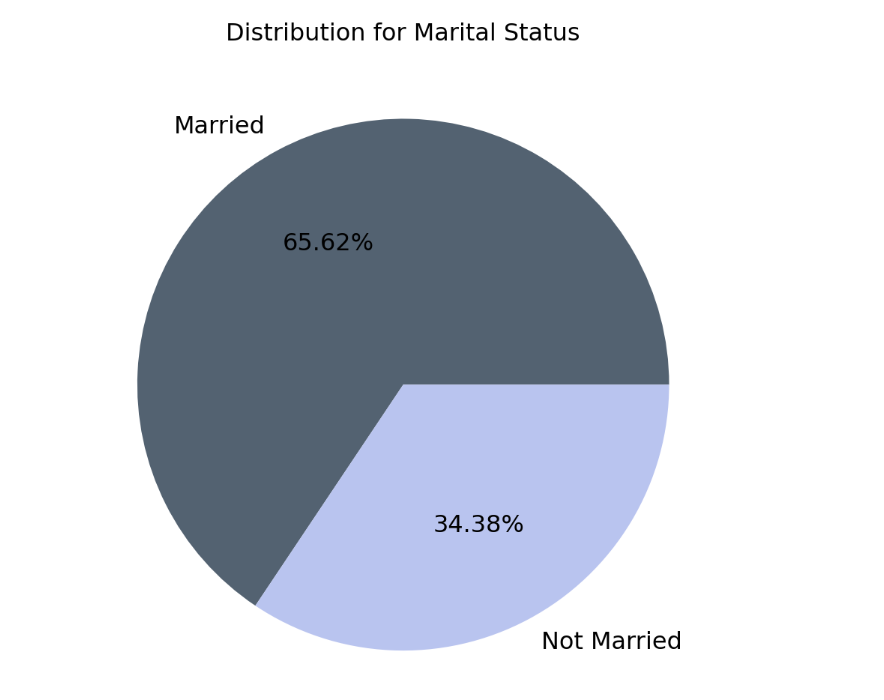
Visualization for Work Type Distribution
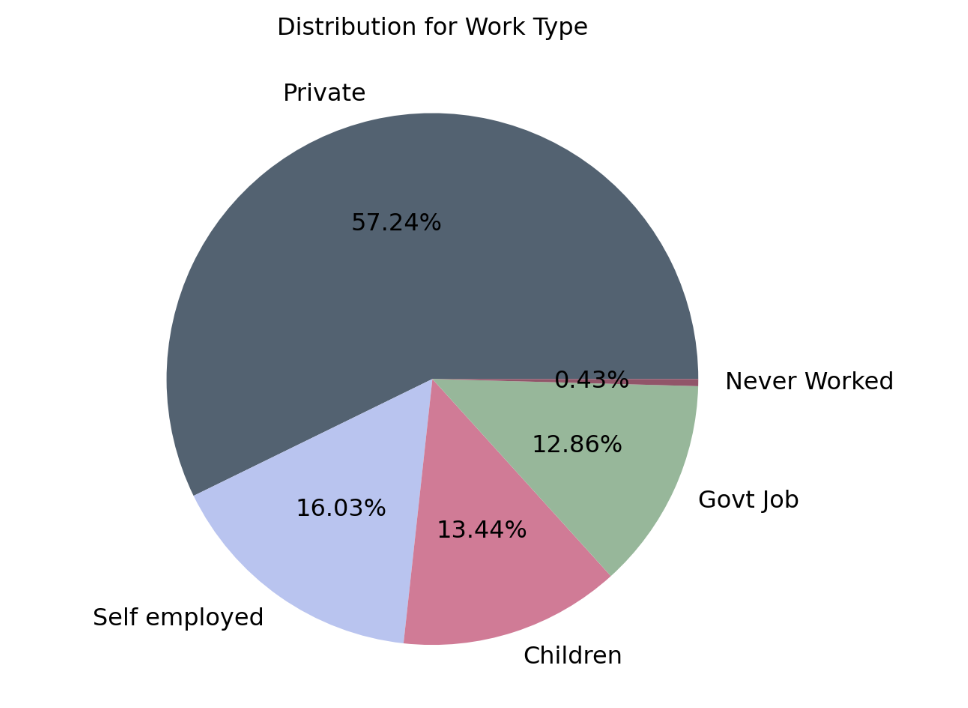
Visualization for Smoking Status Distribution
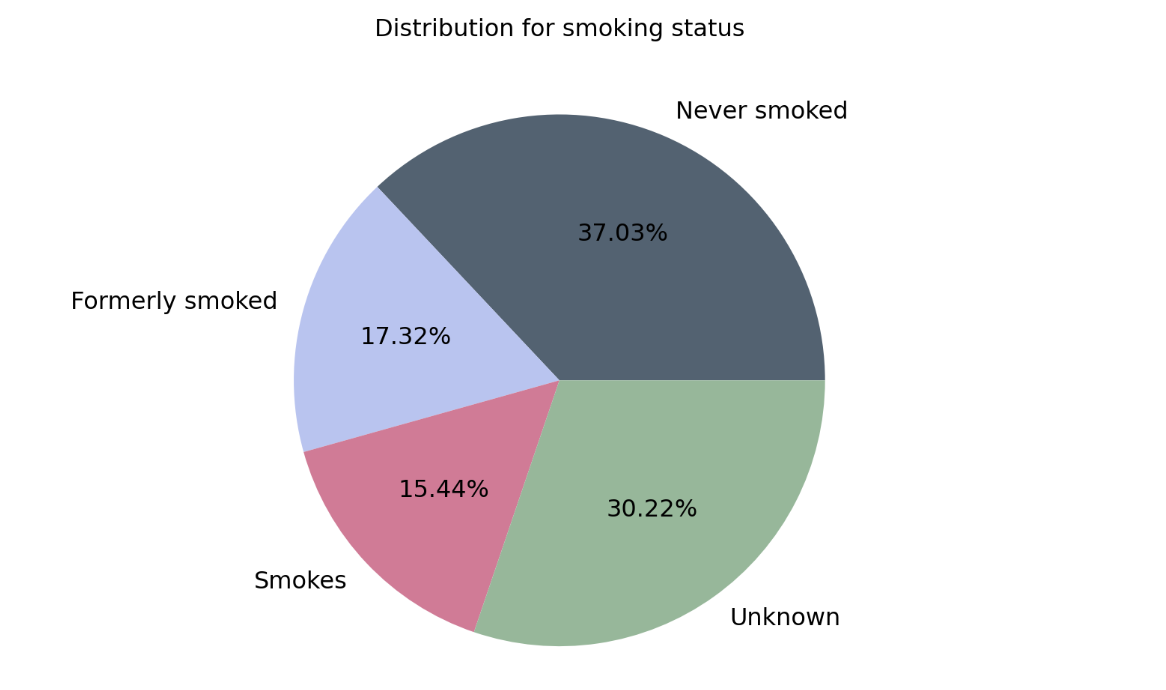
Methods and Results
Exploratory Data Analysis
- Missing values were dropped from the dataset.
- Categorical variables were transformed into factors.
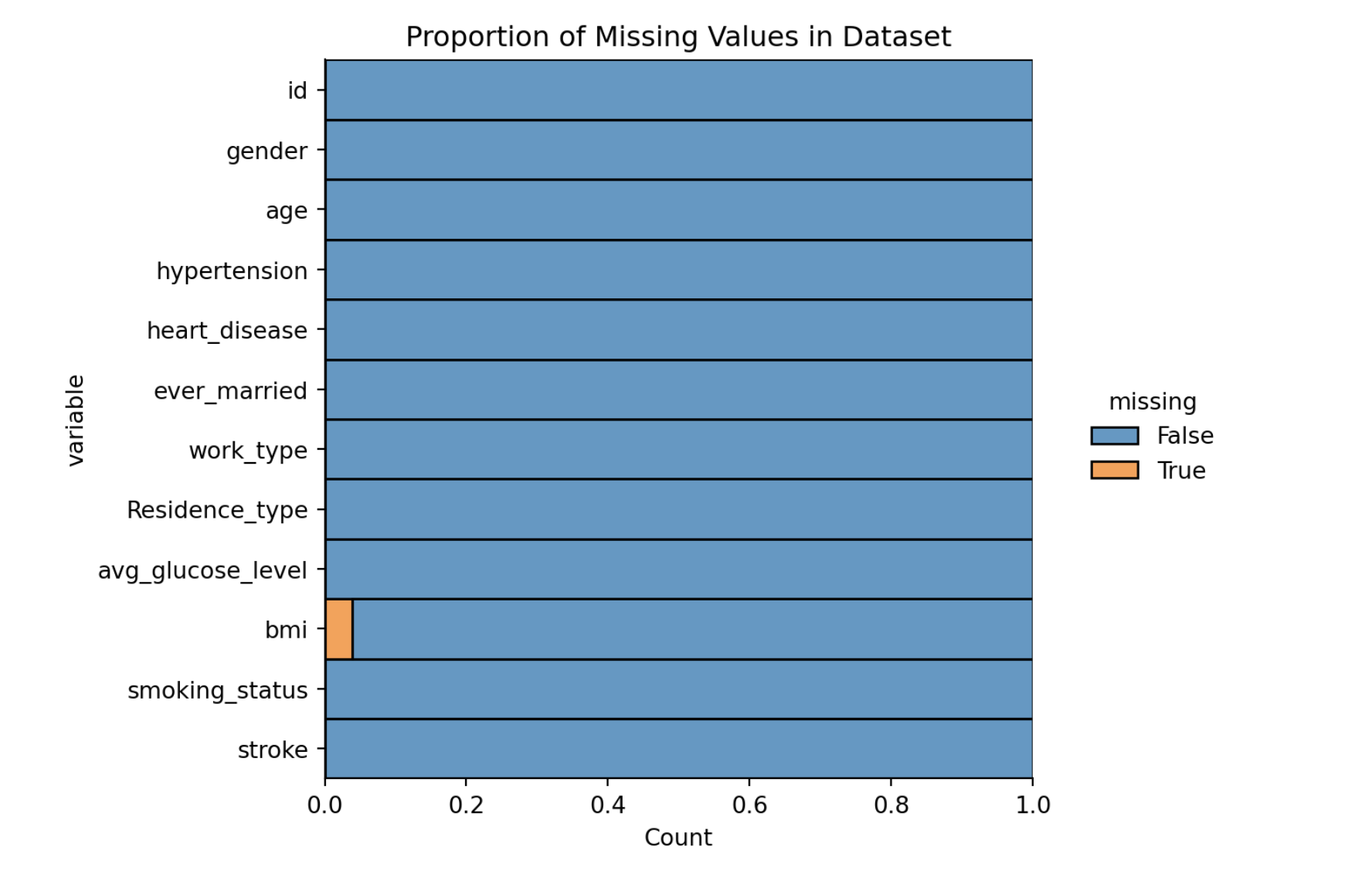
Variable Correlation Heatmap
- The correlation matrix of all variables, other the ID, is displayed on the heatmap.
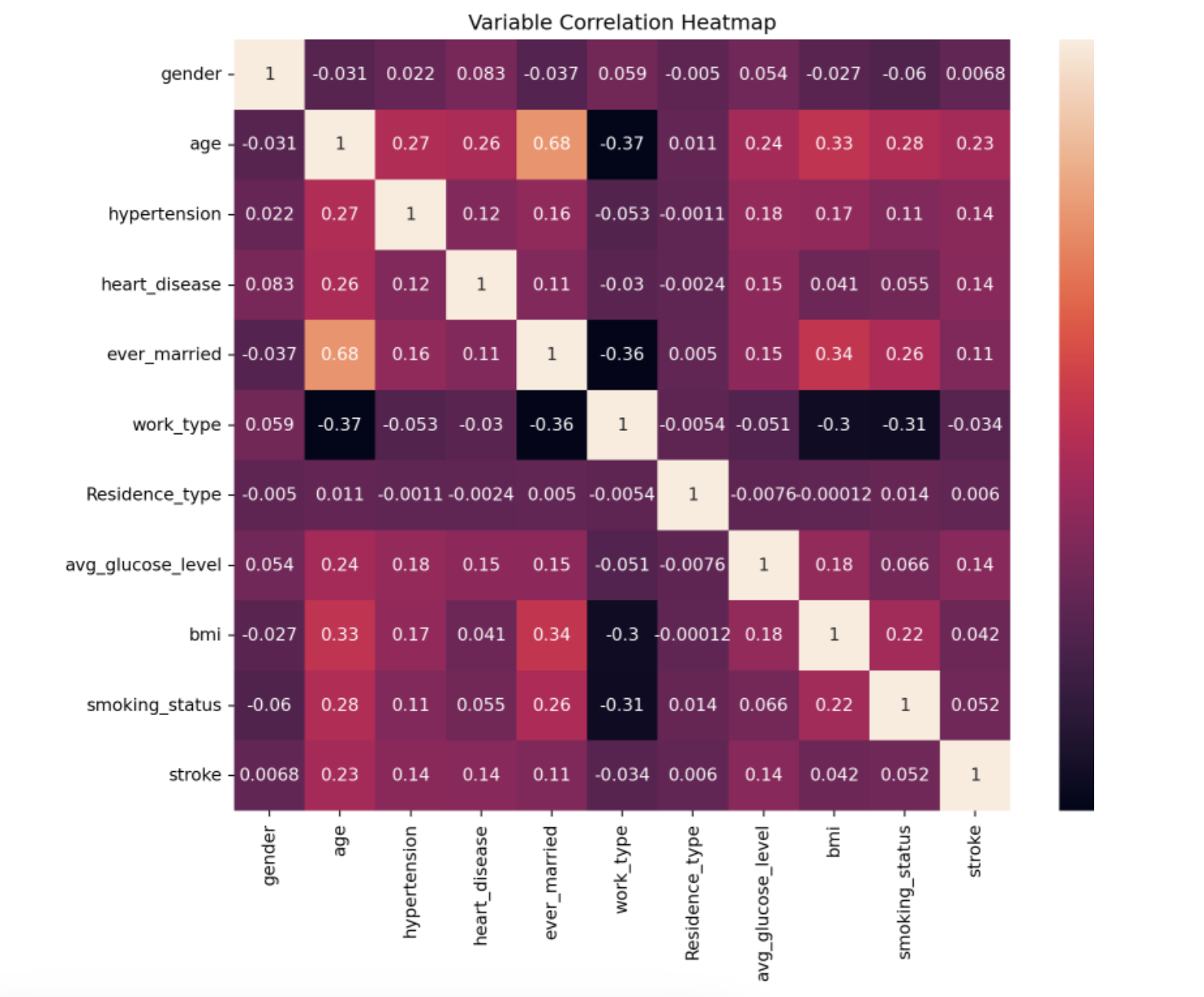
Machine Learning
- After preparing the dataset, we split it into training (80%) and testing (20%) sets.
- We trained 5 different machine learning models on this dataset: Random Forest, Decision Tree, Support Vector Machine (SVM), Artificial Neural Network (ANN), Logistic Regression.
- To evaluate the performance of these models, we employed 5-fold cross-validation.
Results

Model Performance Evaluation
- If model simplicity, speed, and interpretability are essential, Logistic Regression is an excellent option.
- However, if model robustness and predictive power are the priority, Random Forest would be the better choice.
Conclusion
Summary
There was not a particularly strong correlation between the stroke outcome and the covariates listed in the dataset.
The strongest correlation to a stroke outcome was with age at 0.23.
Other notable correlations to a stroke outcome were hypertension, heart disease and glucose level, all at 0.14.
Conclusion
- It appears that the strongest correlations to a stroke outcome occur with participants’ physical properties rather than their demographics or living status.
- The model results show that individuals in this dataset could be classified by their stroke outcome based on the covariates age, gender, marital status, and employment status, BMI, glucose levels, and smoking history with a high degree of accuracy.
- Since there did not appear to be a particularly strong correlation to any one covariate, it was likely a combination of these factors associated with a stroke outcome.
Future work
To increase the population of people being surveyed as one of the limitations we encountered with this dataset is that there was actually a very small proportion of people who had a stroke compared to those that did not: 4.87% (N=249) of individuals had a stroke, while 95.1% (N=4861) did not.
This created an unequal distribution within both the training and testing dataset, which may have artificially boosted the classification accuracy.
Future work
To increase the diversity of the population of people being surveyed as the context upon which the study was conducted was not able to return insights that we could consider to be generalizable across the general public internationally.
The dataset was from a study that was conducted in China, with the population studied mainly being the Chinese population. As such, observations gathered from the study would be considered more applicable towards the Asian population instead of the international population.
References
- 2020: Pathan, Muhammad Salman & Zhang, Jianbiao & John, Deepu & Nag, Avishek & Dev, Soumyabrata. (2020). Identifying Stroke Indicators Using Rough Sets. IEEE Access. 8. 10.1109/ACCESS.2020.3039439